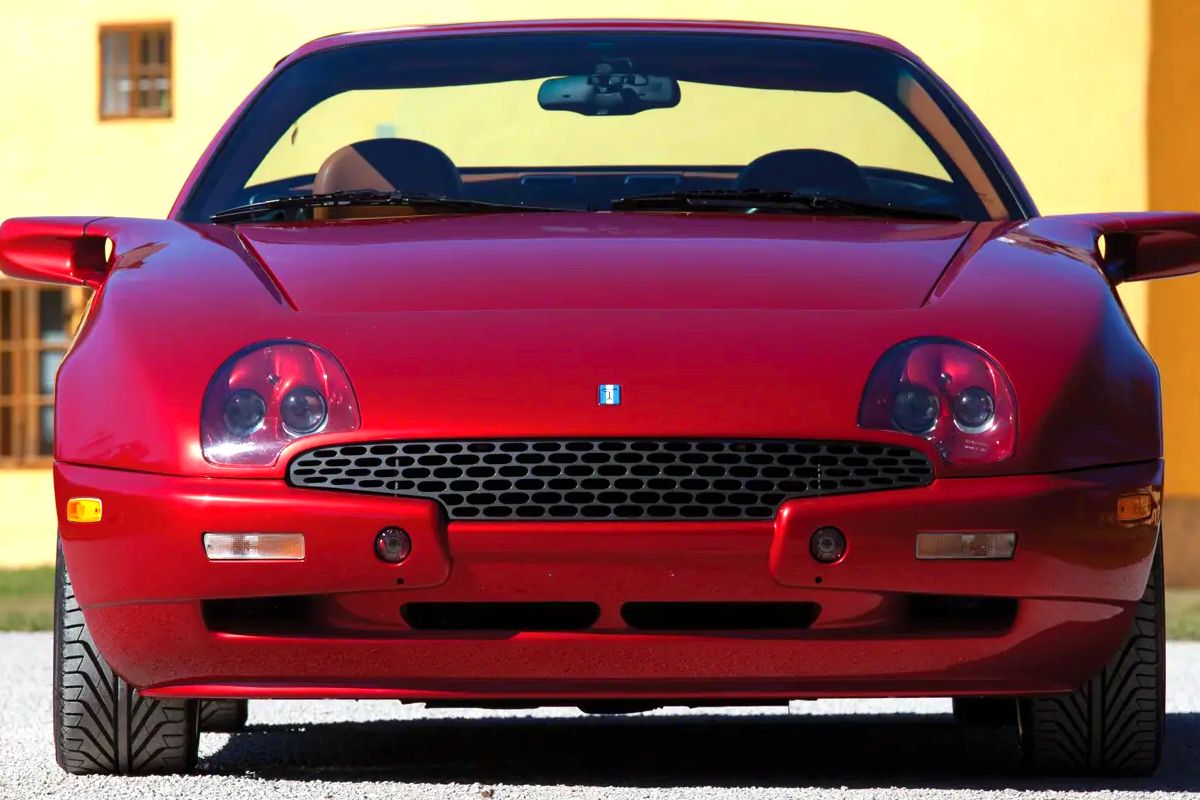
The story we're interested in today is that of Qvale, a carmaker whose years of excistence can be counted on the fingers of one hand. An Italian-American dream, born in San Francisco, California, and manufactured in Modena, Italy. The only car marketed was the Mangusta, named after the De Tomaso model of the same name. Logical, since this car should originally have been called De Tomaso. The story of the Manugsta is also one of imbroglio.
An old friend to the rescue
In the early 90s, legendary founder Alessandro de Tomaso was struggling with health problems, but he also had to save his moribund brand. His "empire" had already had to sell off Maserati, Innocenti and Moto Guzzi to replenish the coffers. The Pantera is aging, while the Guara is a flop.
Inspired by TR Griffith, In 1996, De Tomaso unveiled a concept dubbed Bigua, but which could not go beyond the prototype stage without adequate financial investment. After being turned down by the Italian government, De Tomaso turned to an old acquaintance, the Norwegian-born Qvale family, who had been importing de Tomaso to the USA since the 1960s, as well as Maserati, when the Trident went under the Argentinean flag. The father, Kjell, was the first Jaguar importer on the West Coast and even owner of the English Jensen brand, until its bankruptcy in 1976. His son Bruce was won over by the idea and invested in de Tomaso, becoming its majority shareholder.
Mongoose breaks an old friendship
Except that the whole thing quickly turns sour. Between De Tomaso and Qvale there are not only differences over the project, but above all a power struggle. De Tomaso does not intend to be dispossessed of its brand. In 1998, the Qvale family created Qvale Modena SpA to produce the Mangusta. The break with De Tomaso was complete, and Qvale decided to go it alone.
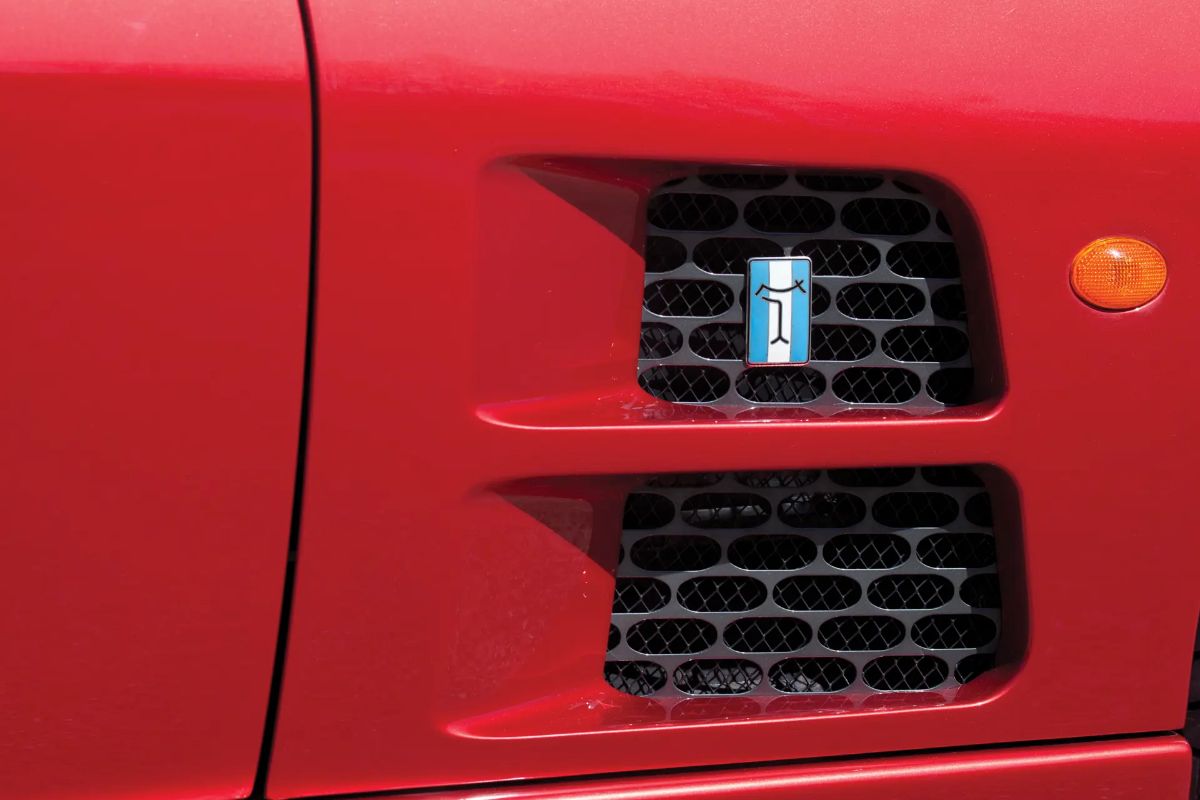
Nevertheless, De Tomaso reacted by obtaining a ban on the use of its name. So, while the model was presented at the Los Angeles Auto Show in 2000 under the De Tomaso name, and the first models were produced under the De Tomaso name, production subsequently switched to Qvale. As a result, the first purchasers had to go to the dealership to have their badges replaced.
Not an easy look!
This change, incidentally, already condemns the model, as Qvale has no legitimacy, and is difficult to pronounce! And yet, renowned talents were involved: Chassis design was entrusted to Enrique Scalabroni, a former Formula 1 designer with solid experience at Dallara, Williams and Ferrari. The Mangusta was designed by Marcello Gandini, the man behind the Lamborghini Countach, the Lancia Statos and the Citroën BX.
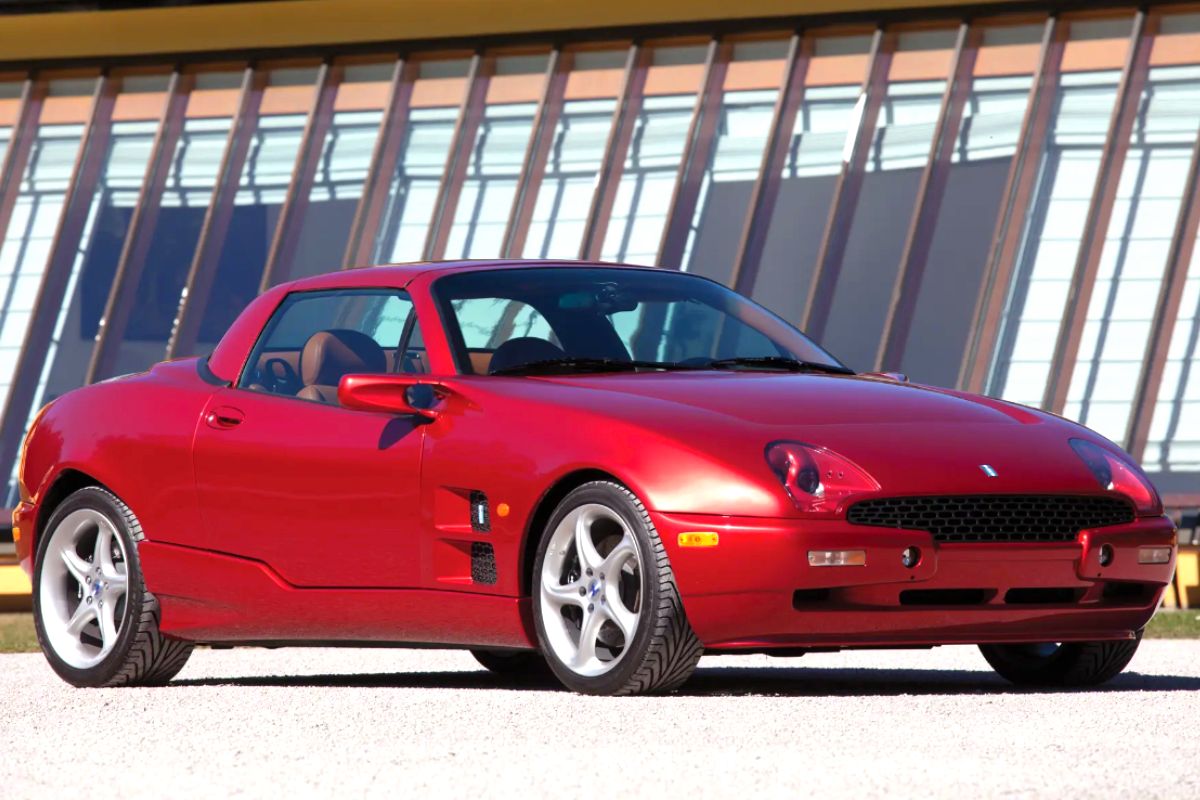
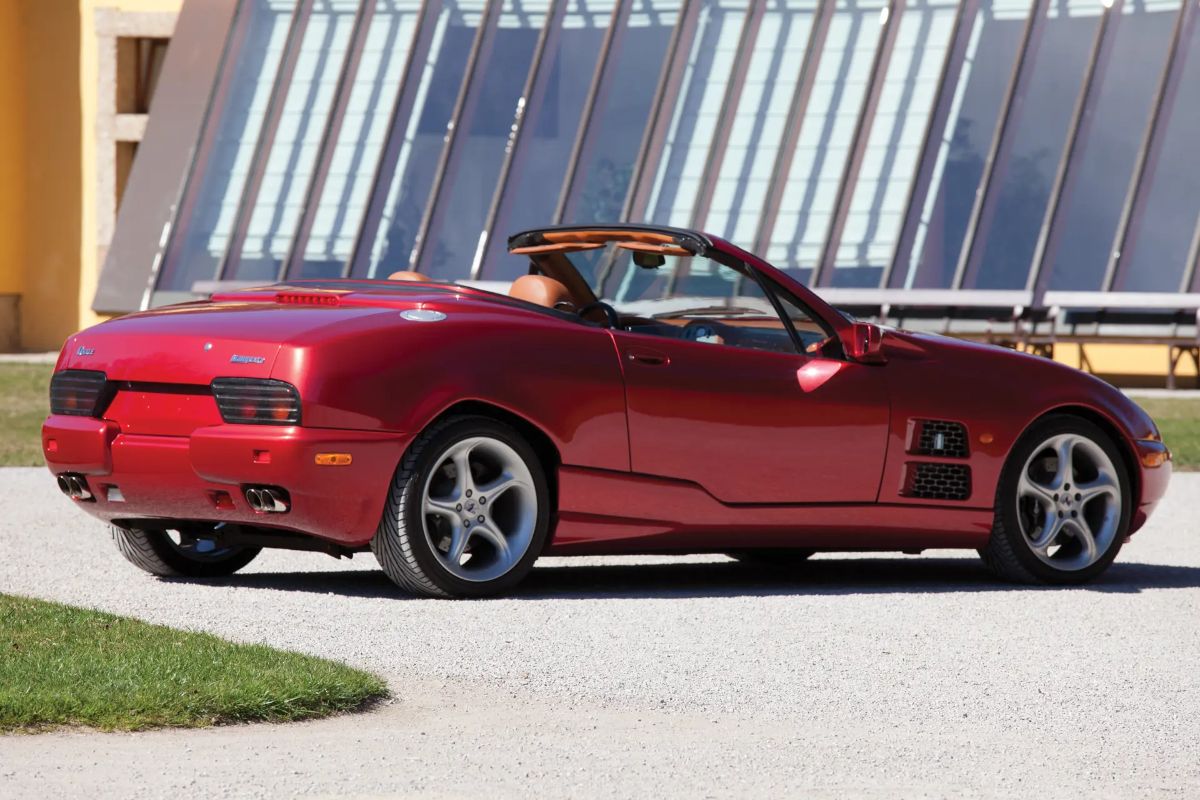
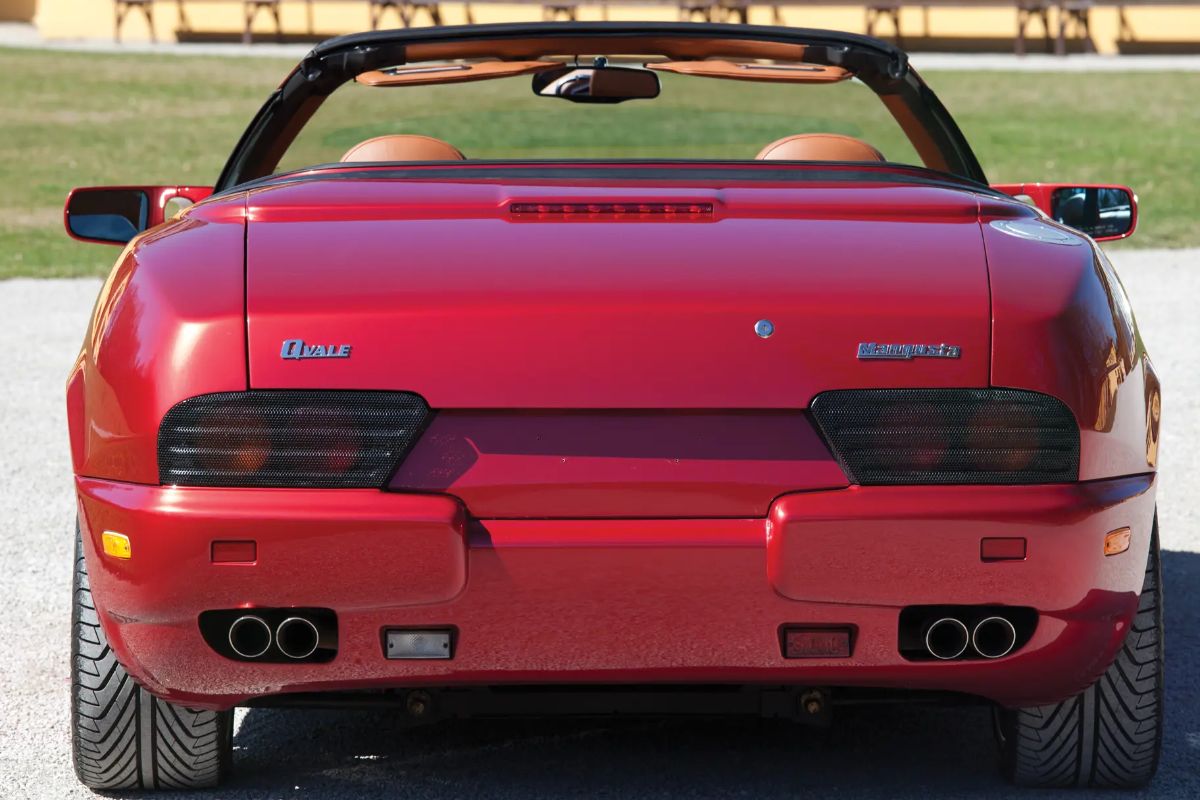
But it has to be said that Gandini wasn't very inspired here. The Mangusta's lines are rather jumbled and massive, with a very high roofline and, above all, an unsuccessful front end with a pincer-shaped spoiler and ugly headlamps, hidden by the grille, that look as if they've been lifted from a Ford Ka. There are a few atypical details, such as the Mangusta's sloping rear wheel arches, a Gandini trademark. As for the stern, it features an atypical bumper highlighting lights housed behind a black grille.
But originality!
The Mangusta is powered by a generous 4.6-liter engine derived from the Ford Mustang, which will even be given a Saleen preparation. What really sets this supercar apart is its unique "roto-top" roof mechanism, which slides forward to allow removal of the central panel.
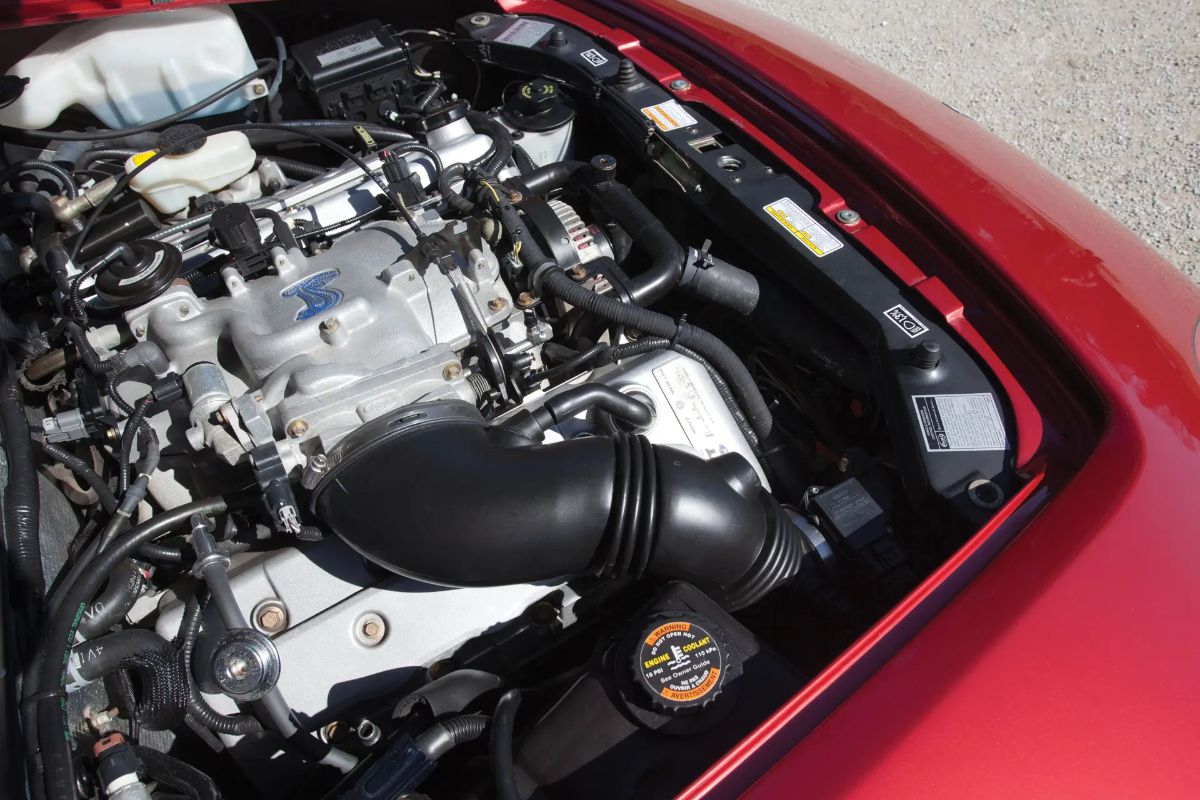
To dismantle the structure, just three steps are required: remove the lightweight center panel by undoing two latches (10 seconds), lower the push-button targa section behind the seats or face a windstorm at over 65 km/h (10 seconds), and stow the center panel in the trunk (10 minutes).
In contrast to the whimsical exterior, the interior is classic but very elegant and well finished. Visteon, Ford's parts division, supplies much of the interior, and is awarded a logo embossed on the seat reinforcement. The leather-wrapped dashboard, seats and trim are unique to the Mangusta, and feature miles of perfectly stitched triple stitching. Refined chrome trim surrounds the gearshift lever, each door handle and the air-conditioning plate. The machined gear knob is a magnificent piece.
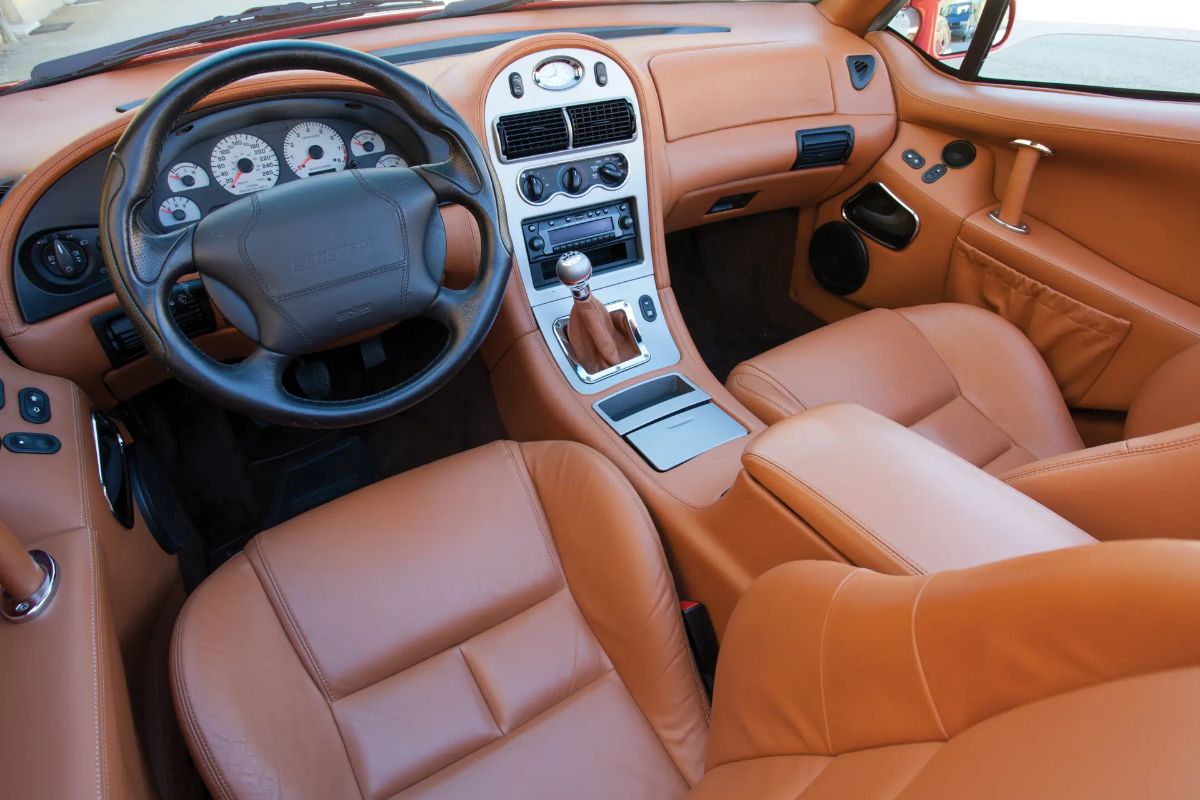
The Mangusta has a few annoying eccentricities. The side window doesn't roll down completely, and the left handbrake can only be reached by clumsily squeezing your arm between the door panel and the seat! Between 2000 and 2002, Qvale built 284 cars, the majority of which were exported to the USA. The lack of a recognized brand, the economic downturn and the unusual design made it difficult to market the car. In 2003, Qvale went out of business.
Este Qvale está mais para um Alfa Romeo Spider 1995, com linhas de carroceria parecidas e faróis que lembram muito o Fiat Coupê, também de 1995.
Ich habe vor einigen Jahren einen Qvale Manguste Probe gefahren. Ich fand das Auto toll. Ich gabe es mir leider auch gebraucht nicht leisten können, sonst wäre ich heute die stolze Besitzerkn eines Qvale Manguste. Mir gefällt es besonders das der Manguste eher originell ist als wunderschön.
Schade! Die haette die Tochter der Pantera sein koennen! Egal, sie wird als kleine Serie in die Geschichtsbuecher und in unsere Herzen bleiben!
Nicht jedes Auto, welches in Italien designed wurde, ist erfolgreich.
Man hätte sich besser eher am Design des Fiat Coupé orientiert oder eher sogar an einem anderen italienischen Boliden. Der Motor ist in diesem Fahrzeug fehl am Platz: zB ein V6 (zB der Busso von Alfa Romeo) wäre eine gute Wahl gewesen. Das Interieur spiegelt kein sportliches Flair wider, auch hier möchte ich zB auf den Maserati GT4200 (oder 3200) verweisen